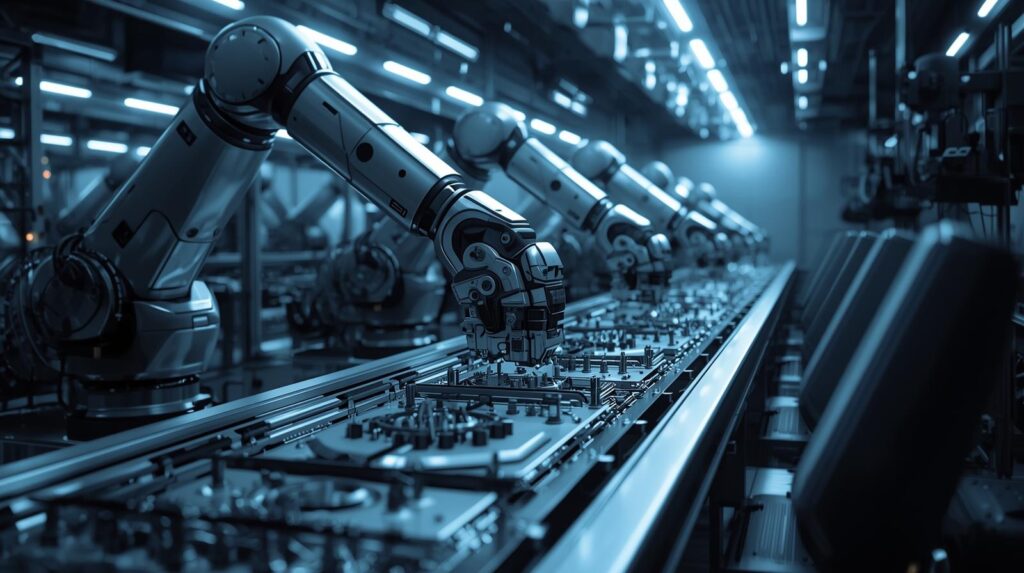The intelligent robotics market is undergoing a period of remarkable expansion, driven by the integration of artificial intelligence (AI), machine learning (ML), and advanced sensing technologies. These innovations are transforming traditional robotic systems into intelligent, adaptive, and autonomous machines capable of learning from data and optimizing performance in real time. From industrial manufacturing and logistics to healthcare and defense, intelligent robots are revolutionizing operations by improving precision, efficiency, and safety. As industries move toward smart automation, understanding the market’s key drivers, challenges, and competitive dynamics becomes essential to gauge its long-term growth potential.
Download PDF Brochure @ https://www.marketsandmarkets.com/pdfdownloadNew.asp?id=99226522

Key Market Drivers
One of the most significant drivers of the intelligent robotics market is the growing global demand for automation across industries. With the increasing need to enhance productivity and reduce operational costs, businesses are adopting intelligent robots to perform repetitive, complex, or hazardous tasks. These robots are equipped with AI algorithms that enable predictive decision-making, fault detection, and self-optimization, thereby reducing downtime and improving efficiency.
The rise of collaborative robots, or cobots, has also played a crucial role in accelerating market growth. Cobots are designed to work safely alongside human operators, assisting in assembly, packaging, and inspection processes. Their flexibility and ease of deployment make them highly suitable for small and medium-sized enterprises (SMEs), widening the adoption base of intelligent robotics.
Another major growth factor is the rapid advancement in AI and ML technologies. These developments allow robots to process massive datasets, learn from experience, and perform cognitive tasks such as speech recognition, facial identification, and object manipulation. The integration of computer vision enables intelligent robots to interpret visual information, making them indispensable in fields such as quality inspection, autonomous navigation, and surgical procedures.
The healthcare industry represents one of the most promising segments for intelligent robotics. AI-driven surgical robots are enhancing the precision and accuracy of complex operations, while service robots are assisting in patient care, rehabilitation, and logistics within healthcare facilities. Additionally, the growing demand for autonomous mobile robots in logistics and e-commerce for warehouse automation, sorting, and delivery operations further strengthens the market outlook.
Market Challenges
Despite the rapid advancements and increasing adoption, the intelligent robotics market faces several challenges that could limit its full potential. One of the key challenges is the high initial cost of intelligent robotic systems. While automation delivers long-term savings, the upfront investment in hardware, software, and integration infrastructure can be substantial, particularly for small enterprises.
Another major obstacle is the complexity of integration with existing systems. Deploying intelligent robots requires compatibility with legacy manufacturing setups, communication protocols, and safety standards. Achieving seamless interoperability between human workers, machines, and digital systems remains a technical and operational challenge.
The lack of skilled workforce also poses a constraint to market growth. As intelligent robots become more advanced, industries require trained professionals capable of programming, maintaining, and managing these systems. The skills gap in robotics engineering, AI programming, and system integration can slow down adoption rates in several regions.
Furthermore, concerns around cybersecurity and data privacy are gaining prominence. Intelligent robots depend on large volumes of data for decision-making, often connected to networks for updates and analytics. Any vulnerability in communication systems or cloud networks can expose sensitive industrial or personal data to potential cyber threats.
Ethical considerations surrounding job displacement and human-robot interaction are also being debated. While intelligent robots enhance productivity, they can replace certain job roles, particularly in repetitive and manual tasks, leading to potential social and economic implications.
Competitive Landscape
The intelligent robotics market is characterized by the presence of established global players alongside a growing number of innovative startups. Companies are heavily investing in research and development to improve robotic intelligence, adaptability, and efficiency. Strategic collaborations, mergers, and acquisitions are common as firms aim to strengthen their technological capabilities and expand their market reach.
Leading players such as ABB, FANUC Corporation, KUKA AG, Yaskawa Electric Corporation, and Mitsubishi Electric are dominating the industrial robotics segment by developing smart robotic solutions for automotive, electronics, and manufacturing industries. Meanwhile, companies like Boston Dynamics, SoftBank Robotics, and Universal Robots are advancing service and collaborative robotics, focusing on flexibility, safety, and human-machine cooperation.
In addition, technology giants such as NVIDIA, Google, and IBM are contributing to the intelligent robotics market through AI and cloud computing platforms that enhance data processing, analytics, and learning capabilities. Startups are also playing a significant role by introducing niche applications in healthcare, agriculture, and logistics through innovative designs and AI-driven functionalities.
Regional competition is intensifying as well, with Asia-Pacific leading the global market due to strong industrial infrastructure, government initiatives supporting automation, and the dominance of manufacturing powerhouses like China, Japan, and South Korea. North America and Europe follow closely, driven by advancements in AI research, robust R&D ecosystems, and increasing adoption across healthcare and defense sectors.